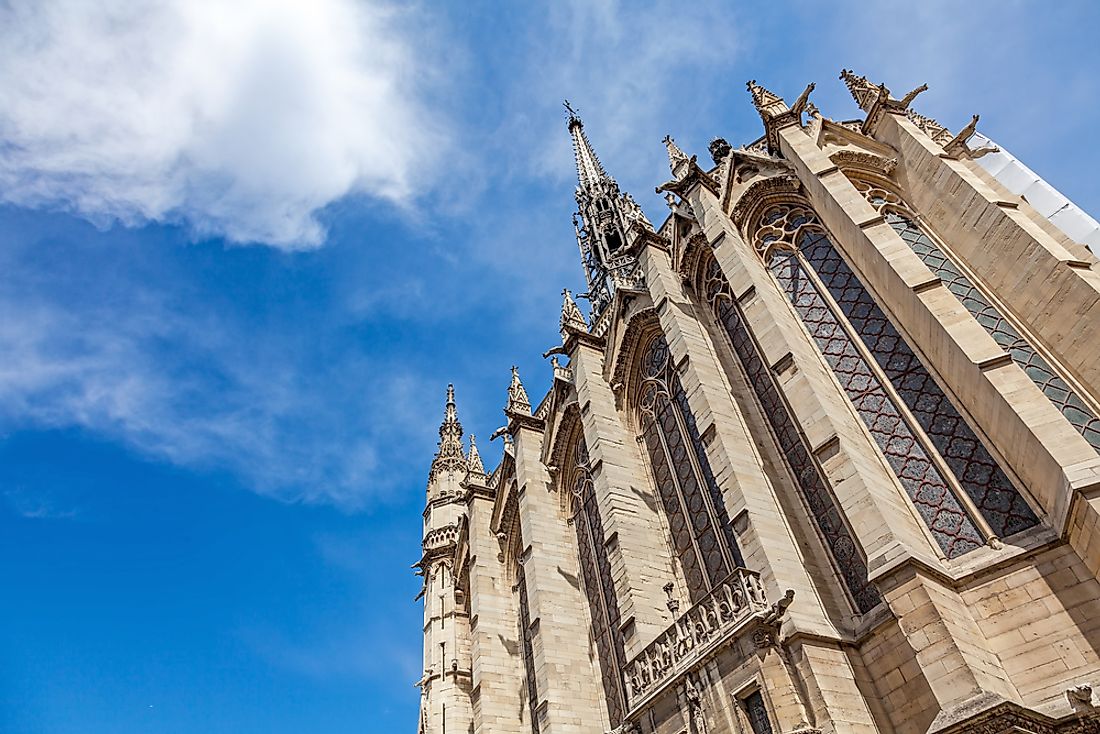Architectural Buildings of the World: Sainte-Chapelle

Sainte-Chapelle is a grand medieval chapel in the French capital of Paris. The huge chapel is one of the most famous examples of French Gothic architecture and has one of the largest collections of 13th -century stained glass in the world. Sainte-Chapelle which officially became a national historic monument in 1862 was built by King Louis IX in the 13th century and became the King’s royal residence and a major religious center in the region until the 14th century.
Historical Background Of The Sainte-Chapelle
King Louis IX of France commissioned the construction of the Sainte-Chapelle in around 1238 and intended to have the chapel at the home of his priceless collection of the Passion Relics which included fragments of the True Cross, The Crown of Thorns of Christ, The Image of Edessa among others. During the period of the chapel’s construction, European politics were heavily reliant on the patronage of the Holy Roman Catholic Church and King Louis IX wanted to build the magnificent chapel as a testament to his influence as the central monarch of the entire western Christendom. Construction of the Sainte-Chapelle was completed in 1248 and was consecrated on April 26th, 1248, the day when the valuable relics were finally placed in a huge silver chest in the chapel amid great celebration. Part of the celebrations included the king carrying the relics into the chapel while dressed as a penitent and barefoot, an event that is depicted in the stained glass art found in the chapel.
Architectural Design Of The Sainte-Chapelle
The Sainte-Chapelle is among the best-preserved pieces of original Gothic architecture and particularly the gothic phase is known as the “Rayonnant.” The two-story design of the Sainte-Chapelle was inspired by the very similar Aachen Chapel which was constructed between 792 AD and 805 AD by the first Holy Roman Emperor, Charlemagne. While there are no records detailing the name of the designer of the chapel, most scholars see it as the work of Pierre de Montreuil, a 13th-century Mason who is credited with the construction of numerous monuments and buildings in Paris. The chapel features the usual gothic characteristics of having strong vertical emphasis as well as the use of the weightless material. The entrance of Royal Palace’s courtyard has an impressive ceremonial staircase. The buttresses are deep and have pinnacles which surmount them. The roof-line has crocketed gables all around it while the spherical windows are arranged with bar tracery subdividing them. The exterior of the chapel is relatively plain and devoid of sculptures or flying buttresses. However, the interior has arguably the best medieval gothic decorations in Paris. The prominent feature in the chapel is the stained glass which is among the best of its kind anywhere in the world and artistically depicts important biblical events on the chapel’s huge windows.
Destruction And Restoration Of The Sainte-Chapelle
The Sainte-Chapelle was damaged during the French Revolution in the late 18th century with about a third of its windows being severely damaged. Some of the relics were also plundered with the “grande chasse” being melted down. However, the chapel underwent extensive restoration in the 19th century with restoration work being based on the existing original descriptions and drawings of the chapel.











